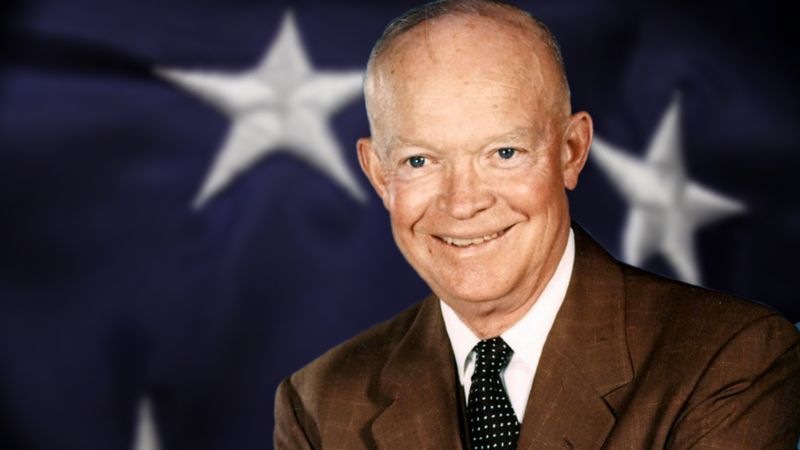
Welcome to the third article in my ‘Leadership in Marketing Cloud‘ series. I created this series to address a major gap in reference and documentation around leadership inside the specific context of Marketing Cloud. When I searched through the community and official places, there was nothing really available!
Please reference here for all the articles currently available for this series.
In the last article we went over the many different Leadership Personas and what each means. We dove into the specifics that separate the personas, but also looked at the blurred edges where they cross over each other. We explored a few Marketing Cloud specific examples of each of these as well as the good and the bad from each persona.
We explored the 3 persona I felt most relevant to Marketing Cloud:
- The Captain Persona – The captain of a ship
- The Manager Persona – A beaurocrat
- The Boss Persona – A Head Chef in a Restaurant
After getting a deep dive in each persona, we started talking about “which one am I?” where we discussed how any good leader is all of these personas, just at different times and different levels. We need to consider your personal strengths as well as the team’s context and needs when deciding the correct persona to use when leading.
Now that we have each of these aspects understood, let’s take a look at what is planned for this article, which is Leadership Styles. Here we will review of 4 different styles and how to use them effectively. Let’s now explore what Leadership Style means.

Leadership Style
Throughout this series there will be three different terms in relation to Leadership that I will be providing information on. Each of these may seem similar, but I will be using them for very specific aspects and cannot be used interchangeably. Below is a quick overview to help differentiate the three terms:
- Path: Whether you are leading people or a specific technology or platform
- Persona: Your leadership persona or focus
- Style: The overall approach and goal of your leadership
In the previous article we went through Leadership Personas. We learned about how personas were “the projected characteristics used to externally affect an outcome.” With that definition and style, defined by the Oxford English Dictionary, means “a manner of doing something” – what is the difference here? What separates a Leadership Persona from a Leadership Style?
The major difference to me is that a persona is something that is more transient and can easily be shifted or adapted to meet the situation or needs, where a style is an overall ‘theme’ of your leadership. Which leads to my definition of Leadership Style, which is “an over-arching concept used, consciously or subconsciously, to dictate your leadership goals and actions.“
…a persona is something that is more transient and can easily be shifted or adapted to meet the situation or needs, where a style is an overall ‘theme’ of your leadership.
There are certainly tons of different styles and themes in leadership and many different shades of each one. Most articles or blog posts you see tend to list 8-10 major leadership styles. I am going to actually reduce that down even more and concentrate on the 4 over-arching leadership styles that I feel are most applicable to Marketing Cloud.
The Leadership Styles I want to go over in this article are the following four:

Now that we are familiar with what Leadership Style means and the four different styles I want to examine, let’s start digging into what each of these mean.
Servant Leadership
I wanted to start out with the one most people will recognize as it tends to be overused and incorrectly used very often. Many people will claim to be a Servant Leader, regardless of their actual style, because that label is the ‘hot new thing’ in leadership. A Servant Leader is much more than just a cool phrase, like ‘open door policy’, it is a legitimate style of leadership. A Servant Leader lives by a people-first mindset and a focus on the fulfillment of the personal and professional needs of each member. They believe that with these needs met, the members are more effective and will be able to produce stronger work.
A Servant Leader is one that excels in motivation and communication. You will find the Servant Leader to be a strong advocate and one that will always make time to hear you as an individual and a professional. The focus is on serving their team instead of the success of the company (but we all know that is still a major consideration in ALL leadership).
A Servant Leader is much more than just a cool phrase, like ‘open door policy’, it is a legitimate style of leadership.
One of the best examples of a Servant Leader is Mahatma Gandhi. Gandhi’s compassion and empathy, shown best in his non-violent methods to fight for independence, are a major aspect of his leadership style. That combined with the understanding that his followers will have doubts and insecurities which he must help them get through to the best of his abilities is what makes him such a great example of Servant Leadership. That being said, Gandhi is an example of Servant Leadership at the highest standard, and not what you should expect from all Servant Leaders.

The phrase I usually use when asked around Servant Leadership is “Without me, the team would just need a new leader, but without the team, I would need a new job“. This is a Servant Leader mindset, showing that the emphasis is on the success of the team. The team’s success is the only way for the leader to also be successful.
Positives:
- A high boost to morale, loyalty, job satisfaction
- Enabling growth and development of the team.
Negatives:
- The required demand on the leader can quickly lead to burnout.
- The Servant Leader tends to not be authoritative which can allow for dissention or indecision.
- The level of intimacy can be too much for some more reserved members.
Now that we have a grasp on Servant Leadership, let’s move on to the next style, Visionary Leadership.
Visionary Leadership
Visionary Leaders tend to be leaders that are renown within their company, if not the related industry. They tend to be those that we push up on a pillar as being a pinnacle of expertise and innovation. A great example of a Visionary Leader is Steve Jobs. Steve disrupted the tech industry to take it into a completely new direction allowing new innovations, such as the iPhone and iPod – which drastically changed the way people used technology.

Visionary leaders push to drive progress and bring about change by inspiration and emphasis on trusting new ideas and exploring new paths. The major ideal around Visionary Leaders is their ability to establish a strong organizational bond. They need to create a community of confidence and trust among their team to enable more ‘risky’ ventures into unestablished solutions and services.
Visionary leaders push to drive progress and bring about change by inspiration and emphasis on trusting new ideas and exploring new paths.
The usual place you will find Visionary Leaders is in smaller, entrepreneurial organizations. These places have the agility to push beyond the ‘expected’ and find disruptions to create a new, better path forward. Visionary leaders need to maintain an optimistic mindset coupled with strategy and planning (and a good heaping of charisma) to be successful and foster the necessary environment for success.
Positives:
- A unified team striving for a better future with better solutions
- Significant growth in capability and success
- Removal and replacement of outdated practices or technologies
Negatives:
- With high risk, can come huge repercussions. Potentially costing the company a lot of money
- With a big picture mentality, they may miss important details or related opportunities
- With a focus on overall success, they may require sacrifices from team that can greatly reduce morale and satisfaction
The next Leadership style I would like to discuss is one that most people think of when they think of ‘middle managers‘, and that is Autocratic Leadership.
Autocratic Leadership
This leadership style is one that many do not know what it even means but would recognize it when they see it. Autocratic Leadership is essentially a style of leadership where the leader holds absolute power on the decisions of the team and acts in a very authoritarian way. Although, usually self-reliant, Autocratic Leaders may have a small group of advisors to assist them in decision making – but will rarely listen to input from any other source. A great example, in current days, is Elon Musk who is famous for leading with an iron fist and for his public handling of the Twitter acquisition and layoffs.

Autocratic Leaders tend to be micro-managers and oversee almost every aspect of their team and provide very clear and defined directions that are expected to be explicitly followed. In this extent, Autocratic Leaders usually are not involved in more long-term goals or strategies, but are instead focused on ensuring the team is completing all the highly important tasks within the timelines needed.
Autocratic Leadership is essentially a style of leadership where the leader holds absolute power on the decisions of the team and acts in a very authoritarian way.
Usually you will find these types of leaders in places where guidelines and processes are more effective than skill and innovation. A great example of this is a fast food restaurant. Although being a skilled worker is great, being a reliable and amiable worker is much more important as consistency is the goal, rather than innovation.
Positives:
- High Self confidence and assurance
- Quick Decision-making, especially under stress
- Clear chain of command
- Helps to implement and maintain rules and regulations
Negatives:
- Removes all team input
- Decreases morale as makes team feel insignificant and replaceable
- Will not stray from guidelines and processes – smothering innovation and creative solutioning
- Increases stress and anxiety due to constant deadlines and oversight/direction
That is certainly a strong Leadership style and definitely not for everyone, but certainly effective. Let’s move on to our last style.
Democratic Leadership
Most people confuse Democratic Leadership as a form of Servant Leadership. In reality it is a mix of Servant and Autocratic leadership. To be fair, I know these sound almost like polar opposites…so one would wonder, how is this possible to have a mix of two opposites?
Essentially a Democratic Leader is one that will have the same decisiveness and focus as an Autocratic leader, but instead of relying solely on themselves or a small trusted advisory group, they let their whole team have a voice and speak their opinions to the leader. The leader will then consider this information prior to making the final decision on the path forward – which helps the team feel more heard and can lead to inclusion of innovation and creative solutioning that a single individual could never do alone.
Leadership is the art of getting someone else to do something you want done because he wants to do it.
A fairly obvious example of Democratic Leadership is any president in a democratic nation (although you would be surprised how many are not actually Democratic Leaders despite leading a democratic nation). As my homeland, we will use the United States. So for example, President Dwight D. Eisenhower of the United States is a democratic leader that is reknown for relying on panels and experts to lead in a time of great turmoil, rather than try to take it all on himself. Research into Einsenhower also led to this quote that I absolutely had to share: “Leadership is the art of getting someone else to do something you want done because he wants to do it.“

Positives:
- Team feels heard and valued
- Provides a singular leader still, to allow for focus
- High moral and retention of team
Negatives:
- Reliance on groups and teams can lead to stagnation and delays
- Can add social anxiety to team members who do not like sharing or group settings
- Can create dissention if a close vote, causing a rift in team
Now we have the four relevant Leadership Styles I see in relation to Marketing Cloud, let’s explore what defines a Good Leader.
What makes a Good Leader?
When push comes to shove, a good leader does not have any singular trait or action or style or anything really. Well, other than the fact that they go above and beyond to ensure that the goal that was laid out is met or exceeded through proper usage of the resources available. A leader can be cruel, kind, uncaring, emotional and more – but none of those make or exclude the leader from being a good leader.
How can being cruel not exclude you from being a good leader? Well, that depends on your definition of ‘cruel’ and of ‘good leader’. If you are in a spin class and your instructor is yelling at you and calling you names, is he not then also leading you to push yourself beyond what any kind and caring instructor might get from you? Wouldn’t you consider that good leadership?
A good leader is someone that recognizes a need of the many and works to fill that need to accomplish the goal. So, as much as I wish I could point to a single data point or action item to make you a good leader, it is really about intuition, experience and knowledge. Through preparation, coaching and learning, you can find your path and find the times when you need to shift away from who you are and instead adopt a new persona and/or style to help drive your team to the next level through Good Leadership.
Conclusion
With this information around styles and good leadership, we will begin exploring specific aspects of Leadership, such as Delegation, Enablement and so much more. Over the next few articles, I will step away from the overview and begin diving into the more tangible, real examples and details of leadership.
Look forward to seeing you in the next article! If you wish to look at any of the other articles in this series, please go here to view all available articles in my Leadership in Marketing Cloud series.